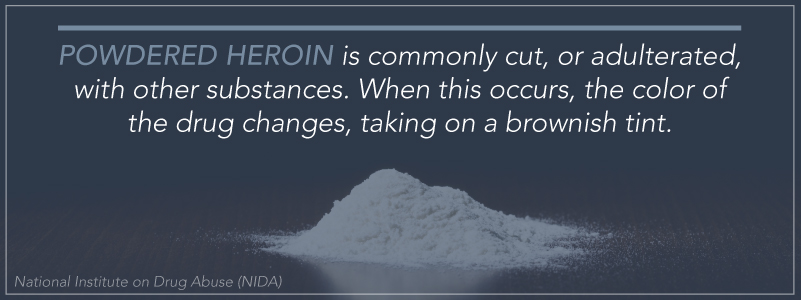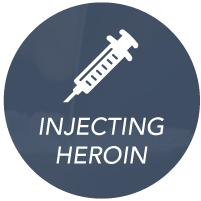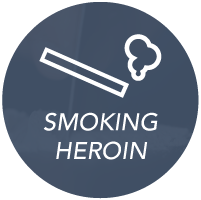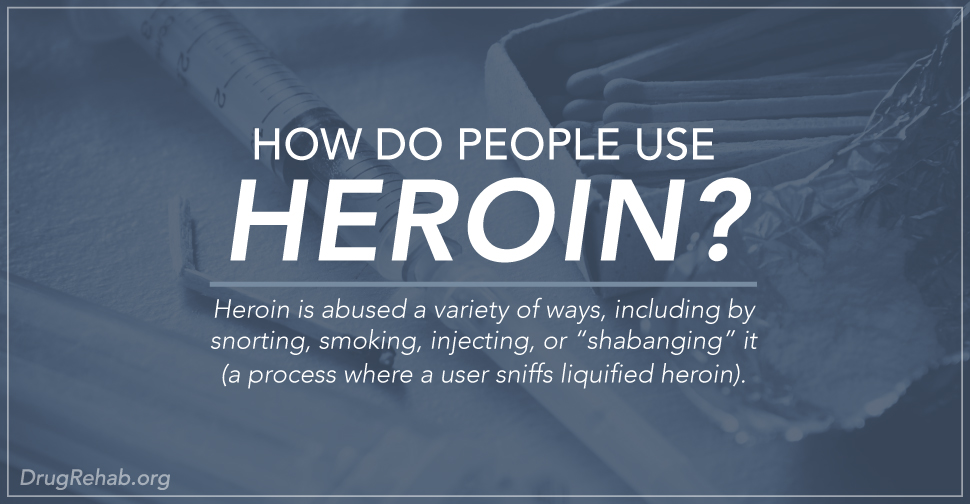What Is Heroin?
Heroin is an opioid drug processed from morphine. In its pure form, it’s a white, bitter powder. The pure form is mainly smoked and snorted, as explained by the National Institute on Drug Abuse (NIDA). Powdered heroin is commonly cut, or adulterated, with other substances. When this occurs, the color of the drug changes, taking on a brownish tint.
Heroin is also found in another form called black tar heroin. The appearance is as the name suggests, thick, dark colored and either sticky or hard. The color and form occur from the impurities which result from the manufacturing process. Due to the impurities and lesser quality, many injection drug users choose to inject black tar.
How Does Heroin Work?
Opioid drugs work on your body and brain by attaching to opioid receptors. When this occurs, you experience a pain-relieving effect. Recreational drug users seek to induce another feeling from this chemical brain stimulation.

Heroin, like other opioids, creates an intensely pleasurable state of euphoria. It can also create what is termed a rush. Heroin depresses your central nervous system (CNS). This is one reason why it’s such a dangerous drug.
What Are The Signs Of Heroin Use?
Learning the signs of heroin use can help you to identify a person in need of help.
When a person uses, they may experience:
- A “rush” and sense of euphoria.
- Decreased pain.
- Dry mouth.
- Flushed and warm skin.
- Heavy limbs.
- Intense drowsiness and wakefulness (being “on the nod”).
- Intense itching.
- Nausea and vomiting.
- Slowed breathing and heart functions.
If any of these seem familiar, don’t hesitate to speak up. It can be hard to have this conversation, but by doing so, you could be saving your loved one from harm and even death.
The Risks And Dangers Of Heroin Abuse
If you’re a heroin user or know someone who is, it’s pertinent you understand the risks and dangers of abuse. This information could help to save your life.
Here are some general dangers linked to heroin abuse:
- Addiction
- Compromised immune system
- Complications of the lungs, including pneumonia
- Decreased memory and decision-making skills
- Endocarditis (infection of the heart’s lining and valves)
- Impaired verbal and cognitive functioning
- Poor impulse control
- Miscarriage
- Risky sexual behaviors
- Withdrawal
Heroin can cause overdose, even on the first dose. Overdose occurs because your CNS becomes severely depressed. This leads to drastically reduced heart functions, blood pressure, and breathing rates. The intensity of these factors can cause coma, permanent brain damage, and may lead to death. The CDC reports that heroin-related overdoses are on the rise. Between 2002 and 2013, they rose 286 percent.

What Ways Do People Administer Heroin And What Are The Risks?
As previously mentioned, people choose to use this drug numerous ways. In addition to the above, each route of administration has specific signs of abuse and unique risks.
Injecting Heroin Intravenously (IV)

To prepare for injection, the user liquefies and dissolves the heroin by diluting and heating, or “cooking” it. It is then loaded into the syringe. Shared needles increase the risk of transmissible diseases, including HIV/AIDS and hepatitis B and C. Injection can also cause abscesses, track marks, and other infections within certain soft tissues.
When many people think of injecting heroin, they are quick to think of intravenous (IV) drug users. This means that the drug is injected directly into the vein. Before a person can do this, they tie off their arm with a piece of rubber tubing or a belt to make their vein bulge. These individuals also inject the drug at various other locations throughout their body, including the leg, neck, feet, and even groin.
Intravenous injection allows any contaminants or cutting agents within the heroin to travel throughout the bloodstream. This can lead to:
- Clogged vessels
- Cellular infection or death in certain organs
- An immune response which can cause arthritis and similar illnesses
According to NIDA, IV heroin abuse can cause:
- Collapsed veins
- Scarring
- Necrotizing fasciitis (sometimes referred to as flesh-eating bacteria) causes tissue death
Heroin can also be injected into into the muscle (intramuscularly) or directly beneath the skin (subcutaneously or “skin popping”).
Smoking Heroin

Users place the heroin (typically black tar) on aluminum foil or the top of a pop can and heat it with a lighter. They then inhale the vapors with a straw or hollowed out pen. This is referred to as “chasing the dragon.”
The University of Arizona outlines the following dangers of smoking heroin:
- Pulmonary (lung) function becomes compromised
- An uncomfortable shortness of breath (dyspnea)
- Severe and repeated asthma attacks (status asthmaticus)
Smoking heroin can also cause leukoencephalopathy, a serious disorder of the CNS’s white matter. A debilitating disease, it causes parts of your brain and spinal cord to deteriorate. This can lead to slurred speech, vision loss, paralysis, and even fatalities.
Sniffing/Snorting Heroin (Insufflation)
These methods are sometimes referred to as insufflation. To prepare, users draw the drug into lines with a razor or credit card on a hard surface like a mirror. They then use a straw, hollow pen, or rolled dollar bill to inhale it into their nasal cavity. This method is very invasive. It can cause great damage to the nose and surrounding areas, including:
- Bone loss
- Creating a hole in the septum (area between your nostrils)
- Chronic nosebleeds
- Collapsed nasal passages
- Constant runny nose
- Perforation (hole) in the roof or back of your mouth
- Saddleback nose (a broad, flattened nose)
According to the Center for Substance Abuse Research (CESAR), sniffing the liquified version of heroin through a nasal spray bottle is called “shabanging.”
Mixing Heroin With Other Drugs
Heroin is commonly abused with cocaine (including crack). Alternately snorting lines of these drugs is called “crisscrossing.” If a user injects them both at once it is called “speedballing.” Both of these methods are highly dangerous, as heroin is a depressant and cocaine is a stimulant. Because of this, your body and brain are being simultaneously pulled in two different directions. This increases your risk of overdose and death.
As the opioid epidemic increases, heroin is increasingly used in combination with other, more potent, opioid drugs. Responsible for countless overdoses, these deadly concoctions include fentanyl and carfentanil, and as of late, the lethal mystery combination termed “grey death.”
Some individuals purposely seek out these combinations, believing that they will increase their high. Others stumble into using them, as they unknowingly purchase heroin that is cut with these drugs. By either path, these powerful opioids have left a wave of destruction and overdose deaths across our nation.
Start Living A Drug-Free Life
No matter how you abuse heroin, you’re putting yourself at risk for addiction. Is heroin taking over and ruining your loved one’s life? Or maybe you’re the one struggling. Either way, we can help. It is possible to beat a heroin addiction and find sobriety. DrugRehab.org knows how to find the best heroin rehab centers for your needs. Contact us now.
For More Information Related to “How Do People Use Heroin?” Be Sure To Check Out These Additional Resources From DrugRehab.org:
- How Do People Become Addicted to Heroin?
- Snorting, Smoking, or Injecting Drugs: Which Gets You Addicted
- The Dangers of Snorting Oxycontin (Oxycodone)
- Heroin and Opioid Addiction Statistics
- The Most Commonly Abused Opiates
- Opiate Epidemic Is Changing Pain Management
- 5 Signs You Are Enabling A Family Member’s Drug Addiction
- Drug Addiction And The Brain


